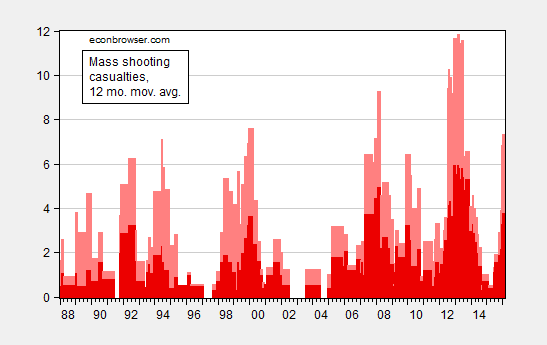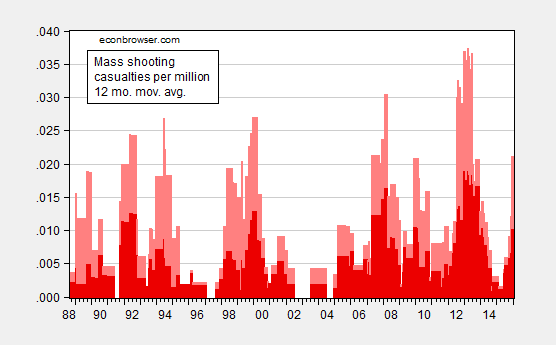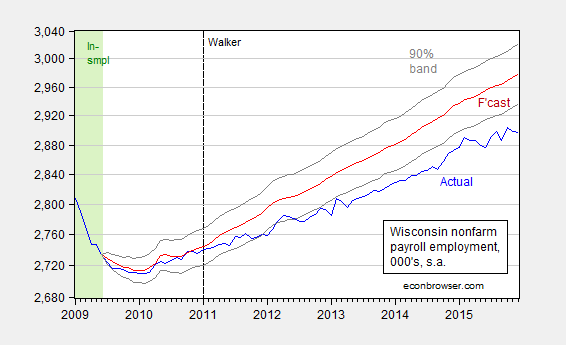Or, breaking up the big banks might provide some visceral joy, but it’s not clear to me that solves the key problem of financial fragility in modern capitalist systems.
Negative interest rates
For an economy with underutilized resources or too low a rate of inflation the traditional prescription for monetary policy is to lower the interest rate. Central banks around the world tried to do that in response to stubbornly weak economies, bringing the overnight interest rate in many countries all the way to zero. But when that didn’t seem to be getting the job done, the Bank of Japan last week decided to go negative, charging banks 0.1% interest for excess reserves. With this step Japan now joins the Euro system, Switzerland, Denmark, and Sweden, all of whom have had negative interest rate policies in place for over a year. Here I describe how negative interest rates work, what they are intended to accomplish, and some of the limitations of using this policy to try to stimulate the economy.
Continue reading
This Wisconsin Resident Feels Much Safer Now
From FoxNews6:
“Gov. Scott Walker is set to sign a bill that would allow people to carry concealed switchblades and knives.”
Manufacturing Sector Resilience…So Far
The employment release (see also [Duy/Economists View]) provided some interesting insights into how manufacturing has fared, in the wake of the appreciation of the dollar (and the slowdown in the world economy).
“China’s efforts to expand the international use of the renminbi”
That’s the title of a new, and illuminating, report written by Eswar Prasad. The entire report is here. This is a must-read for those interested in RMB internationalization.
Mass Shooting Casualties Trending Up (Again)
Figure 1: 12 month moving average of mass shooting casualties; deaths (dark red), wounded (pink). Source: Mother Jones, GunViolenceArchive.org. for January 2016, and author’s calculations.
Update, 2/5 1:45PM Pacific: Title amended to address m4570d0n‘s pedantic comment.
Update, 2/6, 10:30AM Pacific: Reader joe argues per capita figures would be more intuitively accessible. Here is the relevant graph.
Figure 2: 12 month moving average of mass shooting casualties per million; deaths (dark red), wounded (pink). Source: Mother Jones, GunViolenceArchive.org. for January 2016, and author’s calculations.
Note: Mother Jones used a 4 death threshold for definition of mass shooting; I have used that criterion for tabulating January 2016 numbers.
Guest Contribution: “The ECB and the Fed: A Comparative Narrative”
Today, we are fortunate to present a guest contribution written by Dae Woong Kang, Nick Ligthart, and Ashoka Mody, Charles and Marie Visiting Professor in International Economic Policy, Woodrow Wilson School, Princeton University.
Continue reading
Philadelphia Fed Coincident Indices: National, Regional and State Trends
More states are slowing even as the Nation continues to expand. The states that contracted include Wisconsin and Kansas, states pursuing a contractionary fiscal policy. Wisconsin’s level of activity lags that predicted by historical correlations.
The U.S. is not in a recession
The Bureau of Economic Analysis announced today that U.S. real GDP grew at a 0.7% annual rate in the fourth quarter. That’s a bad quarter to be sure, and real GDP is up only 1.8% from a year ago. That’s a weak year judged by the U.S. postwar average of 3.1%, but is not far from the 2.1% annual growth we’ve been averaging since 2009:Q3.
Continue reading
Wisconsin Governor Walker: “The state of our state is strong!”
That’s the first line of an op-ed published Monday. In other news, Wisconsin nonfarm payroll employment (NFP) and private nonfarm payroll employment is decreasing. And NFP lagging what should be the case if the historical correlation between national and Wisconsin employment held, after Governor Walker’s inauguration.
Figure 1: Wisconsin nonfarm payroll employment (blue), forecast from error correction model estimated over 1990M03-2009M06 (red), and 90% confidence band (gray lines), all on log scale. Dashed line at 2011M01 when Walker takes office, and light green denotes sample period. Source: BLS, author’s estimates (as described here).


